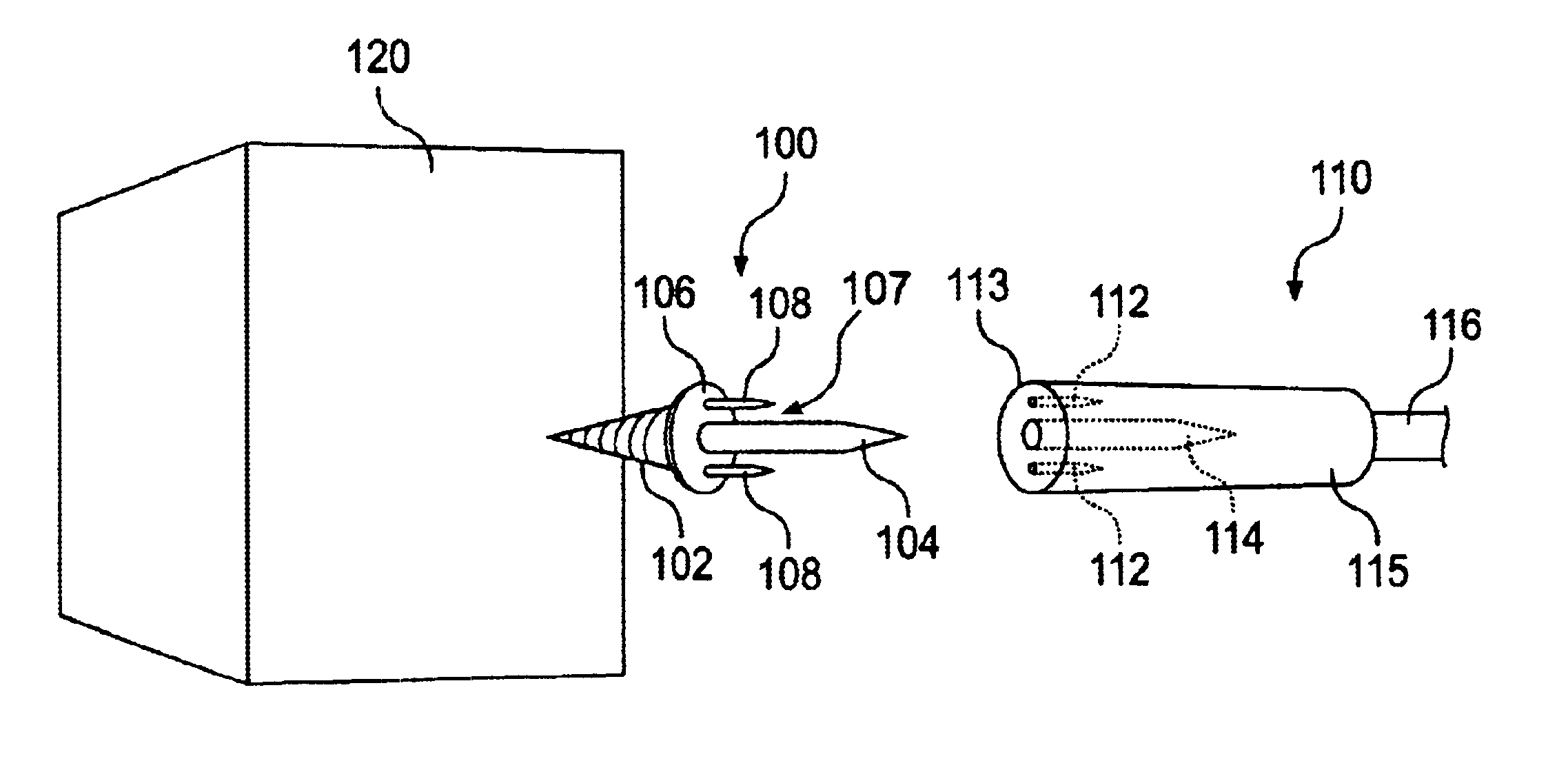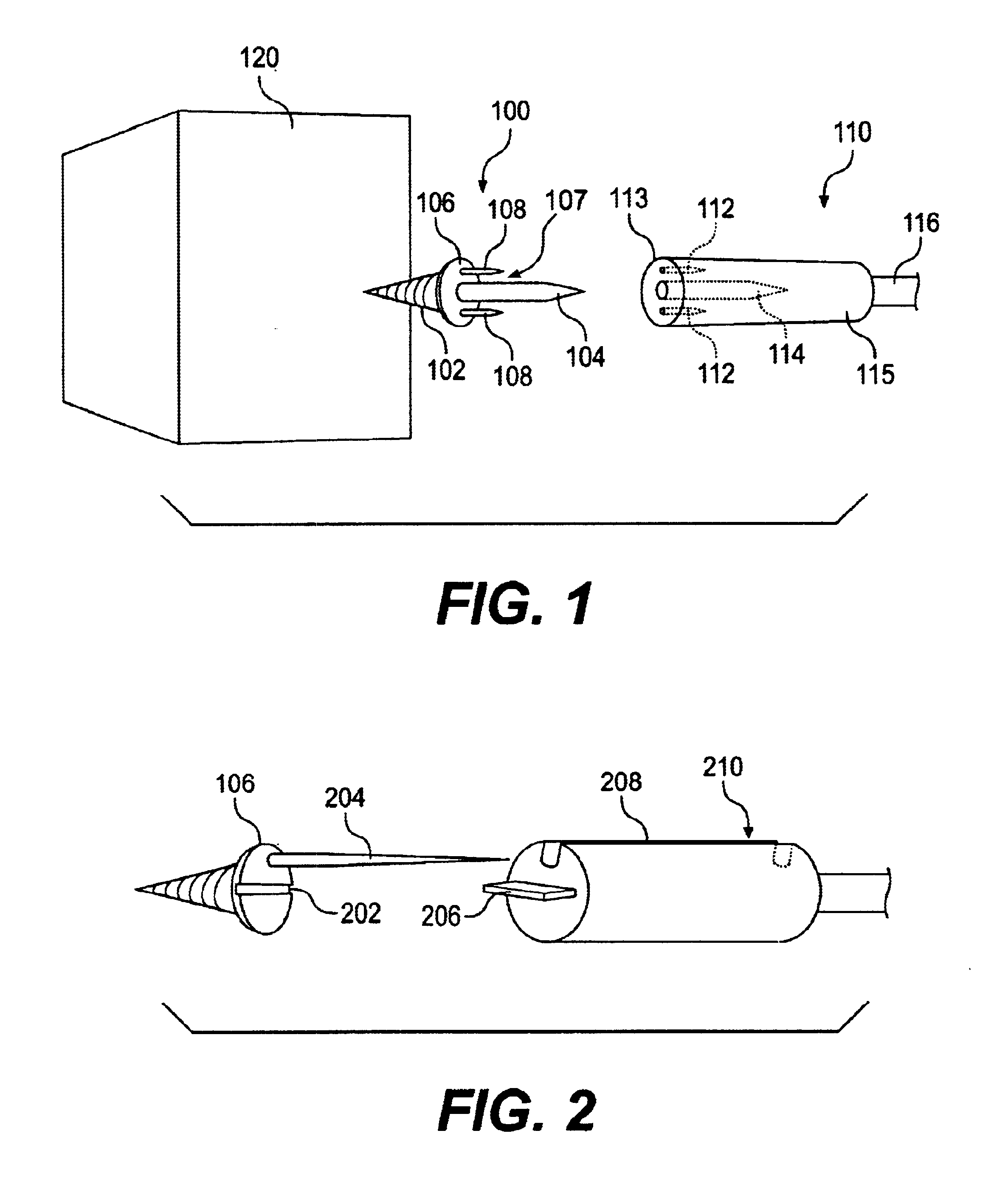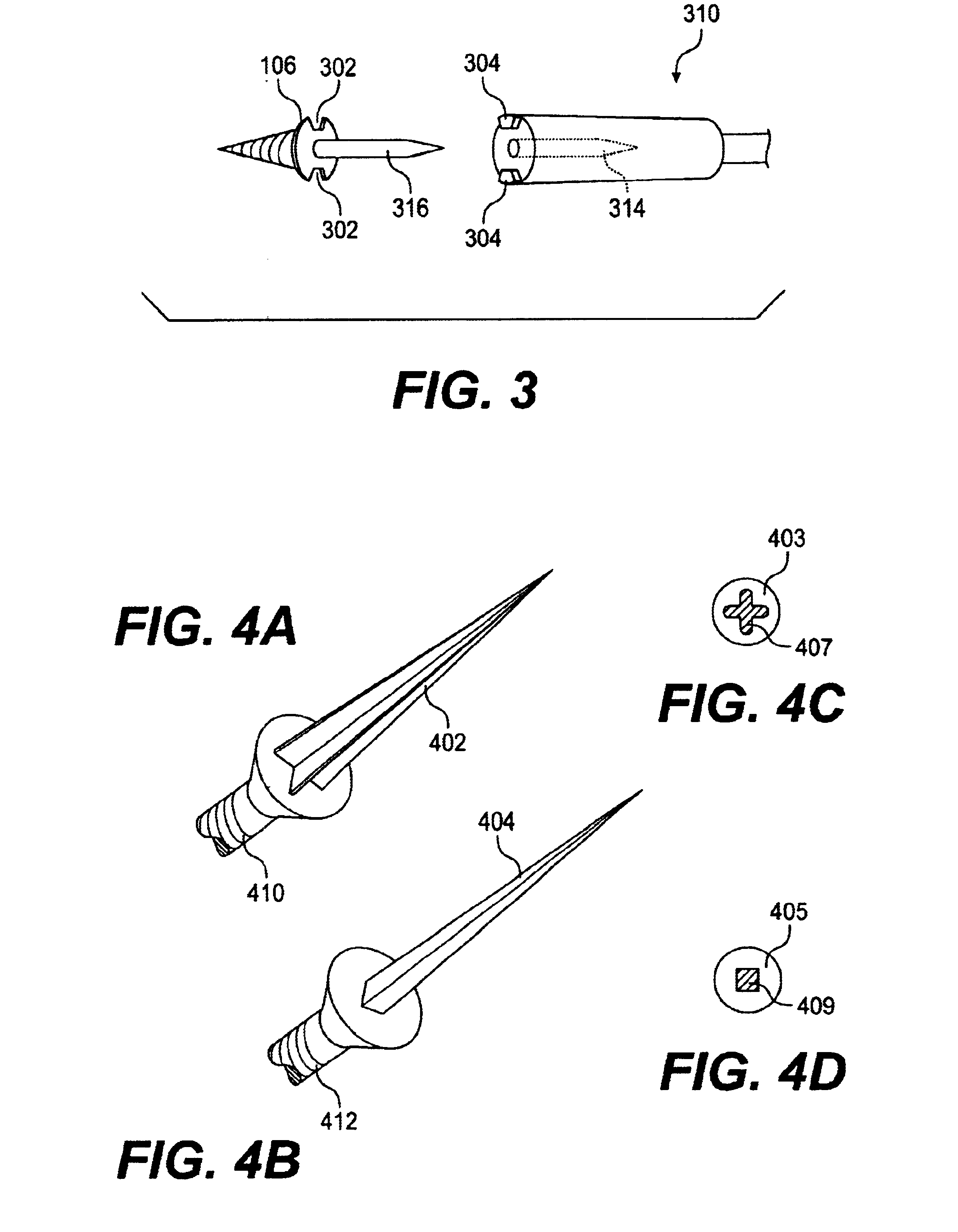Double-ended fastener
a technology of double-ended fasteners and screws, applied in the field of fasteners, can solve the problems of inability to create blind joints of mechanical fasteners such as nails and screws, inability to use mechanical fasteners by themselves to create blind joints, and high cost of tools, jigs, or fixtures, etc., and achieves the effect of easy installation and small skill
- Summary
- Abstract
- Description
- Claims
- Application Information
AI Technical Summary
Benefits of technology
Problems solved by technology
Method used
Image
Examples
Embodiment Construction
FIG. 1 shows an embodiment of the present invention. The present invention includes a fastener 100 having a first end 102 and a second end 104. Both the first end 102 and the second end 104 include a fastener portion. Any type of fastener could be used at either end. The embodiment shows a threaded fastener at the first end 102 and a nail fastener at the second end 104. The embodiment also includes a grasping portion 107 that allows a tool to apply a torque to the fastener. By using the grasping portion 107, a tool can apply a sufficient amount of torque to twist the threaded portion of the fastener into a first member 120. Any meshing arrangement where an installation tool can transmit torque or twist to the fastener may be used in accordance with the present invention.
In one embodiment of the present invention, the grasping portion 107 includes two projections 108 disposed on the platform 106 of the fastener. Preferably, an installation tool 110 is provided to assist in screwing t...
PUM
 Login to View More
Login to View More Abstract
Description
Claims
Application Information
 Login to View More
Login to View More - R&D
- Intellectual Property
- Life Sciences
- Materials
- Tech Scout
- Unparalleled Data Quality
- Higher Quality Content
- 60% Fewer Hallucinations
Browse by: Latest US Patents, China's latest patents, Technical Efficacy Thesaurus, Application Domain, Technology Topic, Popular Technical Reports.
© 2025 PatSnap. All rights reserved.Legal|Privacy policy|Modern Slavery Act Transparency Statement|Sitemap|About US| Contact US: help@patsnap.com



